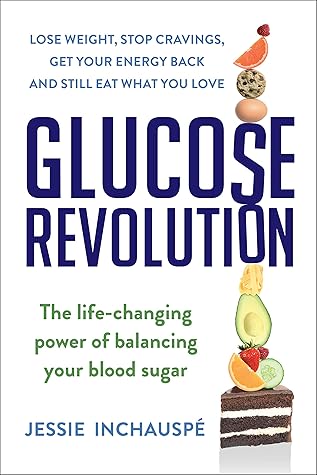More on this book
Community
Kindle Notes & Highlights
Read between
January 5 - January 17, 2024
The solution is simple, and I’ve mentioned it throughout these pages: combine starches and sugars with fat, protein, or fiber.
Have the brownie at your friends’ place, but ask for Greek yogurt with it, too.
Have the bagel at the business meeting, but with some lox alongside.
When you do enjoy carbs (and you will and should and must), make it a habit to add fiber, protein, or fat and, if you can, eat those first.
add avocado and cheese to toast,
eat some almonds before your croissant.
Eating carbohydrates alone isn’t just bad for our glucose levels, it also plays havoc with our hunger hormones.
research proving that the more glucose spikes in our diet, the more we feel symptoms of depression and anxiety.
When we put clothes on our carbs, the game of Tetris our body plays with glucose goes from level 10 to level 1. There is less oxidative stress, fewer free radicals, less inflammation. And less insulin. With flatter glucose curves, we feel better and our mood is more stable.
So although whole fruit is still the healthiest way to eat sugar, we can go a step further and help ourselves some more by combining it with glucose level–flattening friends—fat, protein, and fiber.
When you have a choice between various fruits, the best option is berries. Tropical fruits and grapes are bred to contain high amounts of sugar, so eat them for dessert or put some clothes on them.
I keep in mind that the hungrier I am, the emptier my stomach is, the bigger the spike those naked carbs will cause. (This is why flattening our breakfast curve is so important.)
If sugar is in the top five ingredients, that means a hefty proportion of that food consists of sugar—a soft white roll, for example, or ketchup—and will cause a glucose spike. If sugar is in the top five ingredients, the food will be sweet, and you know what that means: a hidden fructose spike.
The many names of sugar on an ingredients list Look for these: agave nectar, agave syrup, barley malt, beet sugar, brown rice syrup, brown sugar, cane juice crystals, cane sugar, caramel, coconut sugar, confectioner’s sugar, corn syrup, corn syrup solids, date sugar, crushed fruit, dextrin, dextrose, evaporated cane juice, fructose, fruit juice, fruit juice concentrate, fruit puree concentrate, galactose, glucose, glucose syrup solids, golden sugar, golden syrup, grape sugar, high-fructose corn syrup (HFCS), honey, icing sugar, malt syrup, maltodextrin, maltose, maple syrup, muscovado sugar,
...more
Select items whose ingredients get the closest to 1 gram of Dietary Fiber for each 5 grams of Total Carbohydrate. Here’s how to do it: find the number next to Total Carbohydrate and divide it by five.
“Gluten free” doesn’t mean “healthy.” It just means the food wasn’t made with wheat. It can still contain other starches and loads of sugar.
“Vegan” doesn’t mean “healthy.” It just means the food contains no animal products. Same as gluten-free things, these can contain a bunch of starch and sugar.
“Organic” doesn’t mean “healthy.” The food can still contain loads of starch and sugar.


